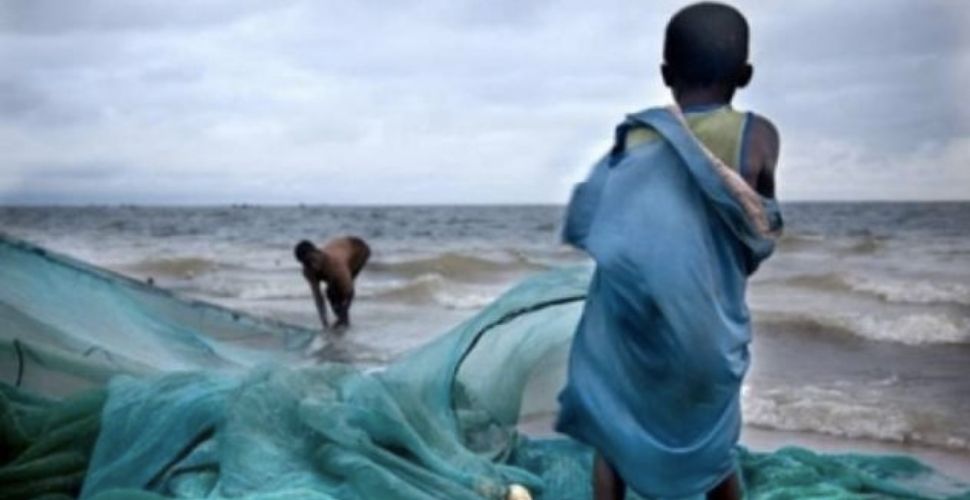Over half of child trafficking victims recruited by family and friends

A new report by the International Organization for Migration (IOM) and Harvard University has uncovered how more than half of child trafficking victims are recruited into exploitation by people close to them, including their own family and friends.
The “enmeshment” process then followed the recruitment stage whereby children are coerced into remaining in exploitation through abuse, threats and excessive working hours.
Structural drivers of child trafficking
Hailed as “the first of its kind”, the report analyses data from 69,000 trafficking victims across 186 countries collected between 2002-2021 to build a picture of the types of exploitation children are trafficked into and the structural and societal factors that contribute to a child's vulnerability to trafficking.
For example, the report finds that a child's inability to access education is linked to increasing their chances of being trafficked with children who had no education 22 times more likely to be trafficked as a child than those who attended high school.
The climate crisis, extreme poverty, environmental degradation and conflict settings also contributed to increasing children's vulnerability to trafficking. Alarmingly, “[…] the global gains in reducing child labour are likely to be reversed for the first time in 20 years. In short, the crisis is having life-altering consequences for millions of children and youth worldwide” according to the UN Office for Drugs and Crime.
According to the report, 51% of child trafficking victims who are exploited in forced labor or sexual exploitation, are pushed into modern slavery by people who are well known to them.
Harriet Barber at the Telegraph reports:
The analysis found that it was often respected members of local communities, including senior army officers and businesspeople promising a better future, who trafficked the children.
Parents themselves were also found to be involved, by seeking out employment opportunities for their children without being aware of the exploitation at play.
What do solutions look like?
Holistic approaches are needed to develop effective and sustainable anti-trafficking strategies that take into account the complex nature of child trafficking.
To ensure that our activism is supporting children around the world to stay safe from trafficking and modern slavery, we need to listen to what at-risk children are asking for.
Existing initiatives are already platforming the voices and requests of working children from around the world. “It's Time to Talk!” was a global project, originally initiated by German NGOs Kindernothilfe and Terre des Hommes, that consulted more than 1,800 working children worldwide. Their research delved into the reasons why children work, the parts of their work that they like and dislike, and collated children's key asks of people who could impact their experience, such as caregivers, governments, NGOs, employers, teachers, and more. They called for policies and practices to:
- reduce family poverty to ensure that their parents and caregivers have access to decent work, good livelihoods, services, and assistance;
- ensure free, quality, safe and inclusive education for every child and non-discriminatory access to other basic services (including birth registration);
- protect children from hazardous and harmful work and monitor implementation of the laws;
- improve working conditions, and support vocational training;
- listen to working children and involve them in practice and policy decisions affecting them; and
- prevent and protect children from violence.
Learn more by checking out our webinar, ‘Do children have the right to decent work?'
This “Eyes on Trafficking” story is reprinted from its original online location.
Fair Use Notice: The PBJ Learning Knowledge Vault is dedicated to advancing understanding of various social justice issues, including human trafficking and related topics. Some of the material presented on this website may contain copyrighted material, the use of which has not always been specifically authorized by the copyright owner. We are making such material available in our efforts to promote education and awareness of these important issues. There is no other central database we are aware of, so we put this together for both historical and research purposes. Articles are categorized and tagged for ease of use. We believe that this constitutes a ‘fair use' of any such copyrighted material as provided for in section 107 of the US Copyright Law. In accordance with Title 17 U.S.C. Section 107, the material on this site is distributed without profit to those who have expressed a prior interest in receiving the included information for research and educational purposes. For more information on fair use, please visit: “17 U.S. Code § 107 – Limitations on exclusive rights” on Cornell Law School's Legal Information Institute.
 ABOUT PBJ LEARNING
ABOUT PBJ LEARNING
PBJ Learning is a leading provider of online human trafficking training, focusing on awareness and prevention education. Their interactive Human Trafficking Essentials online course is used worldwide to educate professionals and individuals how to recognize human trafficking and how to respond to potential victims. Learn on any web browser (even your mobile phone) at any time.
More stories like this can be found in your PBJ Learning Knowledge Vault.
EYES ON TRAFFICKING
This “Eyes on Trafficking” story is reprinted from its original online location.
ABOUT PBJ LEARNING
PBJ Learning is a leading provider of online human trafficking training, focusing on awareness and prevention education. Their interactive Human Trafficking Essentials online course is used worldwide to educate professionals and individuals how to recognize human trafficking and how to respond to potential victims. Learn on any web browser (even your mobile phone) at any time.
More stories like this can be found in your PBJ Learning Knowledge Vault.
